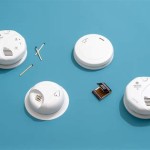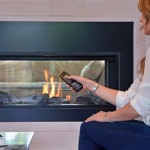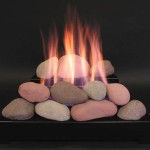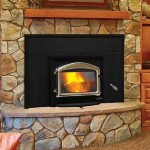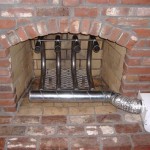Twin Star Electric Fireplace Parts: A Comprehensive Guide
Electric fireplaces offer a convenient and aesthetically pleasing alternative to traditional wood-burning or gas fireplaces. Twin Star is a prominent manufacturer in the electric fireplace industry, known for its diverse range of models and designs. Understanding the various parts that comprise a Twin Star electric fireplace is essential for maintenance, troubleshooting, and potential repairs. This article provides a detailed overview of the key components within a Twin Star electric fireplace and their respective functions. Knowledge of these parts equips owners and technicians to effectively manage and maintain these heating appliances.
Electric fireplaces, including those manufactured by Twin Star, are designed to replicate the ambiance of a traditional fireplace without the associated complexities and hazards. They achieve this through a combination of heating elements, visual effects, and control mechanisms. Understanding how each component works contributes to a more informed ownership experience.
Heating Element Components
The primary function of an electric fireplace is to provide supplemental heat. Twin Star utilizes various heating element technologies, including resistance coils and infrared heaters. Resistance coil heating elements operate by passing an electric current through a coil of wire, which heats up and radiates warmth. These are a common and cost-effective option. Infrared heaters, on the other hand, use infrared lamps to directly heat objects and individuals in the room, offering a more targeted and efficient heating solution.
Key parts related to the heating element include the heating element itself (either a coil or infrared lamp), the reflector (which directs heat outwards), and the thermal cut-off switch. The thermal cut-off switch is a safety device that automatically shuts off the heating element if it overheats, preventing potential hazards such as fires. Regular inspection and maintenance of these components are crucial for safe and efficient operation.
Another vital component is the blower fan. The blower fan circulates the heat generated by the heating element into the room. It is often located behind the heating element and directs airflow through vents on the front of the fireplace. Blower fans can become noisy or inefficient over time due to dust accumulation or motor wear. Cleaning the fan regularly and lubricating the motor can extend its lifespan.
Wiring associated with the heating element must be in good condition. Damaged or frayed wires can create a fire hazard and should be replaced immediately by a qualified technician. The power cord, which connects the fireplace to the electrical outlet, should also be inspected regularly for damage. If the cord is damaged, it should be replaced with a cord of the correct specifications.
Flame Effect and Visual Components
A significant aspect of an electric fireplace is its ability to simulate the appearance of a real fire. This is achieved through a combination of lighting, reflectors, and a rotating or vibrating component that creates the illusion of flickering flames. Twin Star utilizes various methods to produce these visual effects, depending on the model.
Common flame effect components include the flame effect motor, which drives the rotating or vibrating mechanism; the light source, which can be incandescent bulbs, LED lights, or halogen lamps; and the reflector or screen, which projects the light and creates the flame pattern. Some models also use a faux log set or ember bed to enhance the realism of the fireplace.
LED lights are increasingly common in modern electric fireplaces due to their energy efficiency and long lifespan. These lights can be programmed to display a variety of colors and patterns, creating a more dynamic and realistic flame effect. Incandescent bulbs and halogen lamps, although less energy-efficient, can provide a warmer and more traditional flame appearance.
The reflector or screen is typically made of plastic or metal and is designed to distribute the light evenly and create the desired flame pattern. Over time, the reflector can become damaged or discolored, which can affect the quality of the flame effect. Replacing the reflector can restore the original appearance of the fireplace.
The flame effect motor is responsible for driving the rotating or vibrating mechanism that creates the illusion of flickering flames. These motors can wear out over time, resulting in a weaker or inconsistent flame effect. Replacing the motor can restore the flame effect to its original performance.
Control and Electrical Components
The control panel and electrical components are essential for regulating the operation of the electric fireplace. These components allow the user to adjust the heat output, flame effect, and other settings. The control panel typically includes buttons, switches, or a digital display for selecting the desired settings.
Key control and electrical components include the control board, which is the central processing unit of the fireplace; the thermostat, which regulates the temperature; the remote control receiver, which allows the fireplace to be controlled remotely; and the power switch, which turns the fireplace on and off.
The control board is responsible for coordinating the various functions of the fireplace, such as the heating element, flame effect, and timer. If the control board fails, the fireplace may not operate correctly or at all. Replacing the control board requires technical expertise and should be performed by a qualified technician.
The thermostat regulates the temperature of the room by controlling the heating element. It can be set to a specific temperature, and the fireplace will automatically turn on and off to maintain that temperature. A malfunctioning thermostat can cause the fireplace to overheat or not heat at all.
The remote control receiver allows the fireplace to be controlled remotely. This is a convenient feature that allows the user to adjust the settings without having to get up and walk to the fireplace. If the remote control receiver fails, the remote control will no longer work. Ensuring the remote's batteries are functional is a preliminary troubleshooting step.
The power switch turns the fireplace on and off. A faulty power switch can prevent the fireplace from turning on or off. Replacing the power switch is a relatively simple repair that can be performed by a qualified technician.
Additionally, fuses and surge protectors play a crucial role in protecting the electrical components of the fireplace. Fuses protect against overloads, while surge protectors protect against voltage spikes. Regularly checking and replacing these components as needed is vital for preventing damage to the fireplace.
The timer function, often controlled via the control board, allows the user to set the fireplace to turn on or off automatically after a specified period. This is a useful feature for saving energy and ensuring that the fireplace is not left on unnecessarily. A malfunctioning timer can cause the fireplace to turn on or off unexpectedly.
In summary, the control and electrical components are essential for regulating the operation of the electric fireplace and ensuring its safe and efficient performance. Regular maintenance and prompt repair of these components can extend the lifespan of the fireplace and prevent costly repairs.
Ensuring all connections are secure is paramount. Loose connections can lead to arcing, which can damage components and create a fire hazard. Periodically inspecting and tightening all electrical connections is a good preventative measure.
The use of proper grounding is also critical for safety. Grounding provides a path for stray electrical current to flow to the ground, preventing electric shock. Ensure that the fireplace is properly grounded according to the manufacturer's instructions.
When replacing any electrical component, it is essential to use parts that are specifically designed for the Twin Star electric fireplace model. Using incorrect parts can damage the fireplace and void the warranty. Consult the manufacturer's documentation or a qualified technician to ensure that the correct parts are used.
Dust and debris can accumulate inside the electric fireplace, which can affect its performance and lifespan. Regularly cleaning the fireplace with a vacuum cleaner or compressed air can help to prevent dust buildup. Pay particular attention to the blower fan and heating element, as these areas are prone to dust accumulation.
While electric fireplaces are generally safe, it is important to follow basic safety precautions when using them. Never leave the fireplace unattended while it is in operation, and keep flammable materials away from the fireplace. Supervise children and pets around the fireplace to prevent accidents.
By understanding the various parts that comprise a Twin Star electric fireplace and following proper maintenance and safety procedures, owners can ensure that their fireplace provides years of reliable and enjoyable performance. Consulting a qualified technician for any repairs or maintenance that requires specialized knowledge is always recommended.

Fireplace Fan Blower With Heating Element For Twin Star Twinstar Elect Grillpartsreplacement Bbq Parts Retailer

Fireplace Fan Blower With Heating Element For Twin Star Twinstar Elect Grillpartsreplacement Bbq Parts Retailer

Fireplace Fan Blower Amp Heating Element For Twin Star Electric

Electric Fireplaces Stoves Twin Star Internationaltwin International

Replacement Fireplace Fan Blower With Heating Element For Twin Star Amp Other

Twin Star Home 54 5 In Freestanding Electric Fireplace Tv Stand Gray 18mm7655 Pg22s The Depot

Direct Parts Kit Dn103 Electric Fireplace Blower Fan Heating Element Replacement For Twin Star Yahoo Ping

Twin Star Electric Fireplace Control Panel Circuit Board 23 Black Y08 C33 P43

Direct Parts Kit Dn103 Electric Fireplace Blower Fan Heating Element Replacement For Twin Star Yahoo Ping

Fireplace Fan Blower Replacement For Twin Star Electric And Grillpartsreplacement Bbq Parts Retailer
Related Posts


